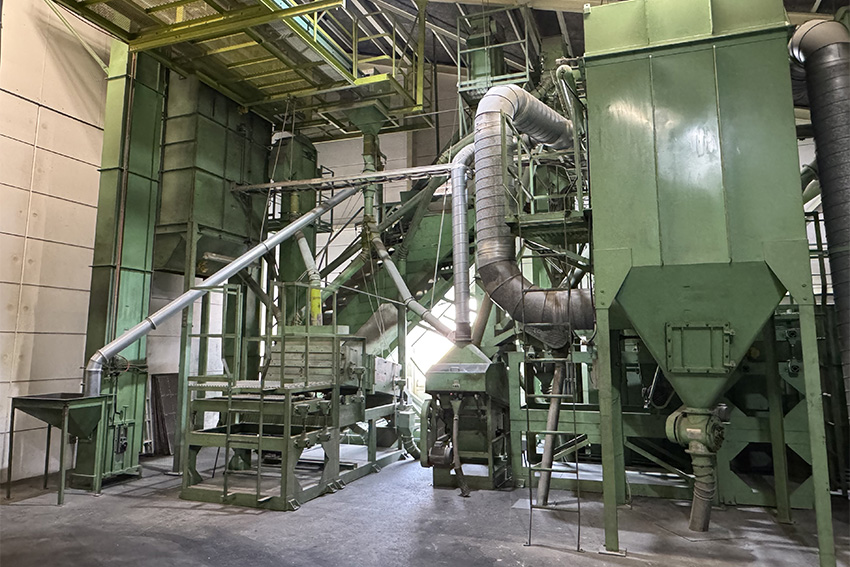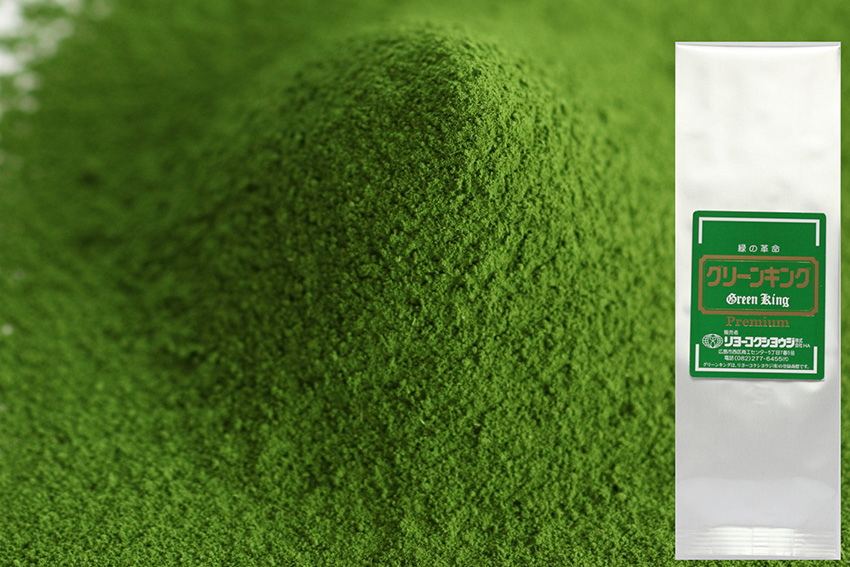For 11 consecutive years, Japan’s food-related exports have continued to grow, reaching JPY 1.45 trillion by 2023. A major driver of this growth has been the global rise of Japanese restaurants, which have tripled over the past decade. From the perspective of a trading company, how do you explain this significant increase in Japanese food exports? And why do you believe now is the moment for washoku to shine on the international stage?
Our mission is to supply soy-based products to manufacturers, and when you look at global soy usage, the majority is directed toward oil production or food consumption. In Japan alone, however, one million tonnes of soy are used specifically for food products—half of which is dedicated to tofu production.
Our primary clients are tofu shops, which sell not only blocks of tofu but also tofu-based food items such as deep fried tofu for miso soup. Traditionally, a Japanese meal consists of multiple dishes, including a main dish and several sides. Side dishes might include items like miso soup or natto, but these days, families are preparing fewer dishes. When families do buy a block of tofu, they often end up with leftovers, especially as household sizes shrink and the population continues to age and decline.
It’s against this backdrop that we developed our product line. We’ve focused on creating offerings that are simple to prepare and include all the necessary ingredients. I would go so far as to say our products are incredibly convenient and user-friendly for today’s consumers.
Are your products primarily targeted at B2B clients, or do you also have a strong presence in the B2C market?
While we do have a B2B component, the background and products I described earlier are primarily focused on the B2C market. That said, our products can also be sold in conjunction with our clients’ offerings—products they create using our ingredients—allowing for added value on both sides.
Are these products intended solely for the domestic market, or are you also expanding your sales overseas?
At the moment, these products are sold exclusively in the domestic market. Japan offers a wide variety of soybeans, and depending on the specific variety, the production methods can vary significantly. One of the key factors we monitor is the amount of sunlight exposure, which we measure using a unit called Heat Units.
Take the Hokkaido variety, for example—it requires a specific number of Heat Units, which makes it unsuitable for cultivation in regions like Hiroshima. Farmers prioritize high yields, so the choice of soybean variety often depends on regional climate and growing conditions. Taste is another important factor, not just for soybeans but for fruits and vegetables as well. This is why we often blend multiple soybean varieties to produce a single tofu product that meets both quality and flavor expectations.
When most people think of soy, they focus on its high protein content. However, the higher the protein content, the firmer the resulting tofu tends to be. Some types of tofu are better enjoyed when soft, and preferences in texture and taste can vary widely across Japan’s different regions.

Soybean Screening Plant
Tofu has long been a staple of Japanese cuisine, but in the Western world, it’s only recently being recognized as a viable alternative to meat. As more consumers seek flavorful ways to reduce meat consumption, tofu has grown in popularity. Your company is addressing this trend by developing soy-based protein and meat alternatives for dishes like gyoza and bibimbap. With growing awareness of tofu as a meat substitute, what business challenges and opportunities do you foresee—especially when it comes to exporting your products to overseas markets?
Tofu is already being manufactured locally in the U.S., and there are several companies producing it abroad. Thanks to advancements in technology, it’s now possible to export tofu at standard temperatures, which has helped facilitate international distribution.
In our case, we primarily export tofu base material and soybeans to manufacturing plants overseas. Currently, our largest export market is Taiwan, where demand continues to grow.
Our research shows that you currently export tofu materials to France and soybeans to Taiwan. As we discussed earlier, there is growing interest in healthier diet options in Western countries. Are you looking to diversify your export markets and expand into new regions?
To be honest, before this interview, I wasn’t entirely sure if our company was the right fit for this discussion—mainly because it’s actually our customers and clients who are exporting to overseas markets like Europe and the United States, not us directly. They often focus on products such as miso and shoyu, particularly targeting organic markets.
In that sense, while we are indirectly contributing to exports through our clients, direct international expansion is not something we’re currently pursuing ourselves.
It’s clear that partnerships play a key role in your business model. Are you currently looking to expand the number of partnerships you’re involved in?
Our company specializes in raw materials. Take Taiwan, for example—a country that’s very familiar with Japan and Japanese ingredients. Consumers there recognize regions like Hokkaido and understand the value associated with products made using Hokkaido soybeans. They’re enthusiastic about consuming these ingredients because of that familiarity. However, in other countries, there may be less awareness of Hokkaido or the specific ingredients it produces, which can present a challenge when marketing Japanese raw materials internationally.
Let’s consider matcha green tea. When matcha is exposed to temperatures above 100 degrees Celsius, its color changes to brown. Properly brewed, matcha is incredibly flavorful and can be used in various products, including cakes and cookies. While some manufacturers use artificial coloring to maintain the vibrant green color, many consumers prefer products made without synthetic additives.
That’s where our Green King Premium stands out. It uses Uji matcha from Kyoto—an ingredient already well-regarded internationally—and serves as a high-quality, natural green coloring option. It not only delivers authentic flavor but also maintains its visual appeal without artificial additives.
In fact, Green King Premium was selected as part of The Wonder 500, a Cool Japan initiative that highlights “excellent local products Japan should be proud of, but that are not yet widely known around the world.” This recognition underscores both the quality and global potential of our products.

Green King Premium Matcha
Matcha has been gaining significant popularity worldwide. In your view, what is the primary market or audience for this product?
Our focus remains firmly on the domestic market, and we are not currently engaged in exporting. In the past, we did export to Taiwan, but at present, we are unable to do so due to the strict regulations in countries like China. As it stands, we cannot export our products in their current form—we would need to modify or conform them to meet international standards. For now, our priority is solely on serving the domestic market.
From what we understand, Ryokokushoji sources soybeans from across Japan as well as from overseas. We also know that you’ve developed your own proprietary processing techniques and sorting systems. What aspects of your products and processes set your company apart from the competition?
Precision and accuracy are extremely important in our work, as each customer has their own unique demands and requirements. We strive to accommodate these needs as much as possible, because our business relies on building strong, lasting relationships with customers who depend on us for high-quality raw materials.
With over 70 years of history, your company has built a strong legacy in the industry. Could you share more about the core strengths of Ryokokushoji and what makes you a preferred partner—particularly for foreign companies seeking to enter the Japanese domestic market?
Soybeans are an agricultural product, which means they’re heavily influenced by weather and climate conditions. To ensure stable production, we focus on sourcing a wide variety of soybean types. While sorting is carried out using advanced machinery, the human element remains critical—there’s a level of quality control and craftsmanship that only skilled professionals can provide.
I would say our core strengths lie in the quality and variety of soybeans we offer, along with our ability to maintain stable procurement. This ensures that our clients always have access to the products they need, without disruptions in supply. That reliability is a key reason why clients, including those from overseas, continue to choose us as their trusted partner in the Japanese market.
If we were to return in two years for a follow-up interview, what goals or aspirations would you hope to have achieved by that time?
For the past decade, our focus has primarily been on serving clients in the western regions of Japan. Looking ahead, we aim to expand our services to the eastern part of the country as well. This would allow us to broaden our customer base and increase our overall reach. We’re pursuing this expansion with an emphasis on gradual, steady growth.
At the heart of everything we do is a strong commitment to supporting our customers in every possible way. This mindset has always guided our company, and we believe that by continuing to prioritize our clients’ needs, we can build even deeper, more trusting relationships moving forward.
If you had to define your company in one sentence, what would that sentence be?
We are the go-to specialists for all soybean needs.
For more information, please visit their website at: https://www.ryokoku.com/